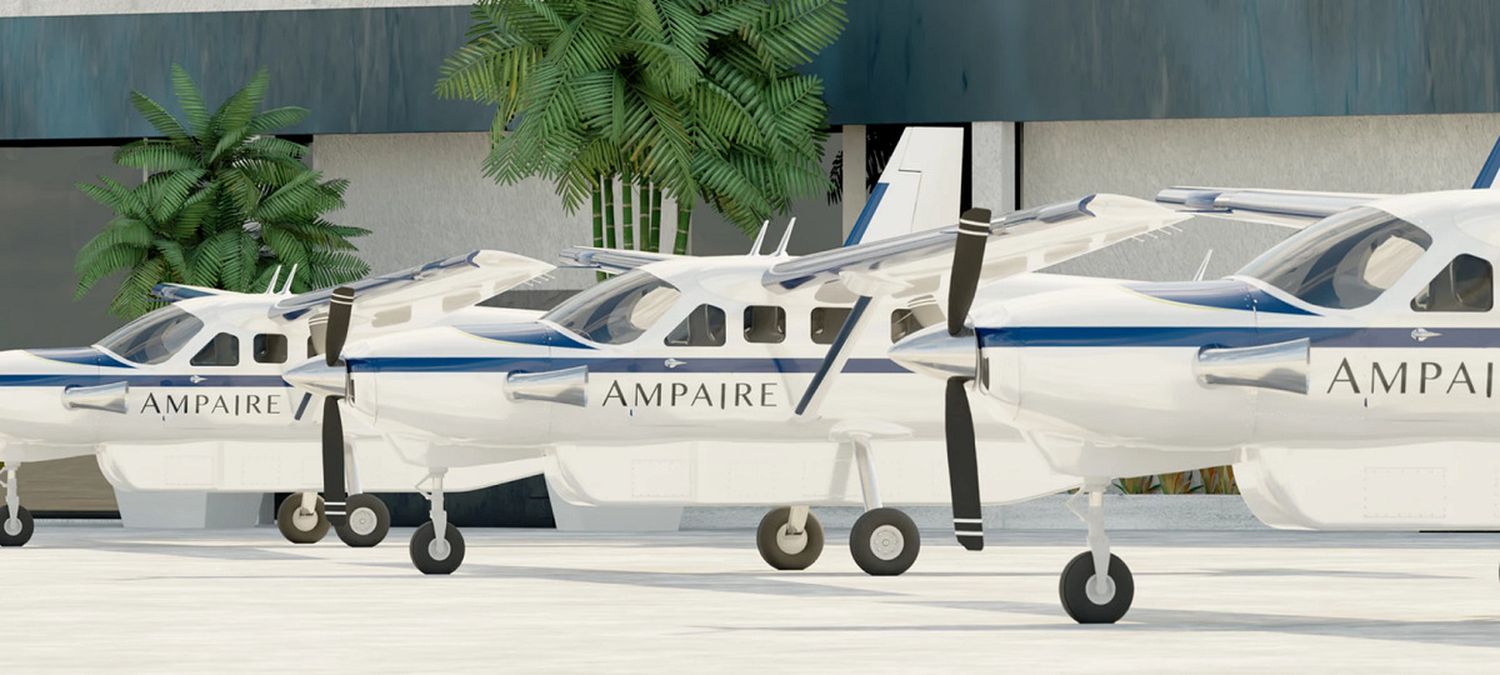Ampaire selects batteries supplier for its Eco Caravan hybrid aircraft
Ampaire, an American company formed in 2016 to develop electric-powered aircraft, selected Electric Power Systems (EP Systems) as the battery supplier for its Eco Caravan hybrid aircraft.
The Eco Caravan is the first commercial product developed by Ampaire. It is a hybrid propulsion model developed from the popular Cessna Grand Caravan. The adaptation maintains the range and payload capacity of the original aircraft. Under the agreement, EP Systems will supply the electrical component of the aircraft’s propulsion system.
The energy storage system to be used, called EPiC, is based on advanced cell technology that provides an energy density of more than 200Wh/kg (watt-hours per kilogram) at the battery pack level. In addition, in average use cases, it offers more than two thousand fast charge cycles before replacement is required.
This is the second propulsion element of the Eco Caravan chosen by Ampaire, which in July had selected the AO3 compression ignition engine, manufactured by RED Aircraft, to provide the combustion thrust for the hybrid system.
The company had already used the EPiC system on its EEL hybrid-powered demonstrator aircraft, developed from the Cessna Skymaster.
Features of the Eco Caravan
According to the developer, it can carry up to nine passengers and has a range of up to 800 miles (1.287 kilometres). In addition, it can carry up to 2.500 pounds (1.133 kilograms) of payload.
Compared to the original Cessna Grand Caravan, the hybrid version consumes up to 70% less fuel on short trips and up to 50% less on longer routes. Consequently, it enables a considerable reduction of carbon dioxide emissions into the atmosphere. Operating with sustainable aviation fuel (SAF) reduces emissions by up to 90%, according to Ampaire.
Moreover, the overall reduction in operating costs is between 25% and 40% compared to the original model, depending on the route.
The new version of the turboprop has already undergone its first power tests on ground and is expected to complete its first flight before the end of the year. It thus became the first hybrid aircraft to enter the United States Federal Aviation Administration’s (FAA) supplemental type certification (STC) process. This is a less complex programme than that required to certify a completely new model. For this reason, Ampaire expects to obtain all necessary approvals in 2024.
See also: Los Angeles – Oshkosh: Ampaire completes the longest hybrid aircraft mission to date


Comentarios
Para comentar, debés estar registrado
Por favor, iniciá sesión